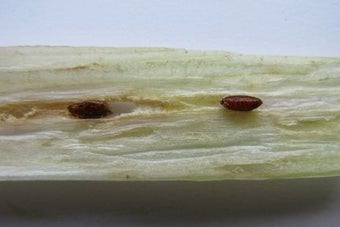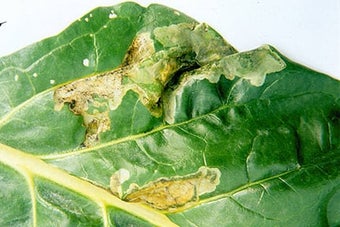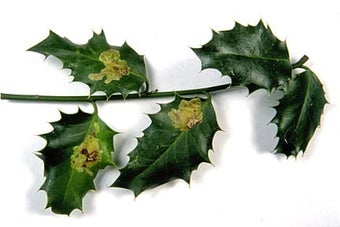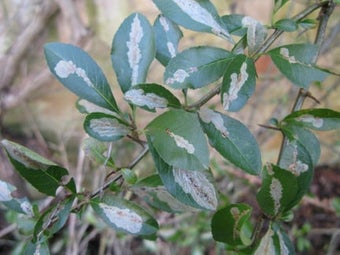
Quick facts
Common name - Astrantia leaf miner
Scientific name - Phytomyza astrantiae
Plants affected - Astrantia
Main cause - Larvae of a leaf-mining fly tunnelling in the foliage
Timing - April-May and July-August
What is astrantia leaf miner?
Astrantia leaf miner is a small fly which as larvae feed within the foliage of astrantia plants.
The fly belongs to the family Agromyzidae, there are several hundred known to occur in Britain and many are leaf miners as larvae. More information on Agromyzidae is available from the Agromyzidae recording scheme.
Nearly 900 other insects, including some beetles, sawflies and moths create leaf mines as larvae more information about some for these insects can be found at The leaf and stem mines of British flies and other insects.
Symptoms
Adult astrantia leaf miners are a fly 2 mm long and greyish brown in colour. They feed by rasping the leaf surface, leaving small pale spots on the upper leaf surface.
More significant markings are caused by the creamy white larvae. They eat the internal tissues of the leaves and cause whitish brown discoloured blotches. The mines typically have a pale edge around the darker brownish centre.
There are two generations during the summer and by August each leaf can be affected by several mines.
Management
Astrantia plants will survive and produce flowers, even when there is extensive leaf mining, so this insect can be tolerated and treated as part of the a healthy garden supports. Leaf miners can be part of a healthy balanced garden, most species will have natural enemies including parasitoid wasps. Birds such as blue tits can sometimes open mines to consume the larvae within. If you do decide to manage these leaf miners here are some of the steps you can take:
- Larvae can be squashed within the mines
- Affected leaves can be removed
Biology
Astrantia leaf miner has two generations during the summer. The females deposit their eggs on the foliage during April and July. The eggs hatch into legless larvae that tunnel into the foliage where they eat the internal tissues. The mines are initially linear but later broaden to form a whitish brown blotch mine. When fully fed, the larvae pupate within the mines.














